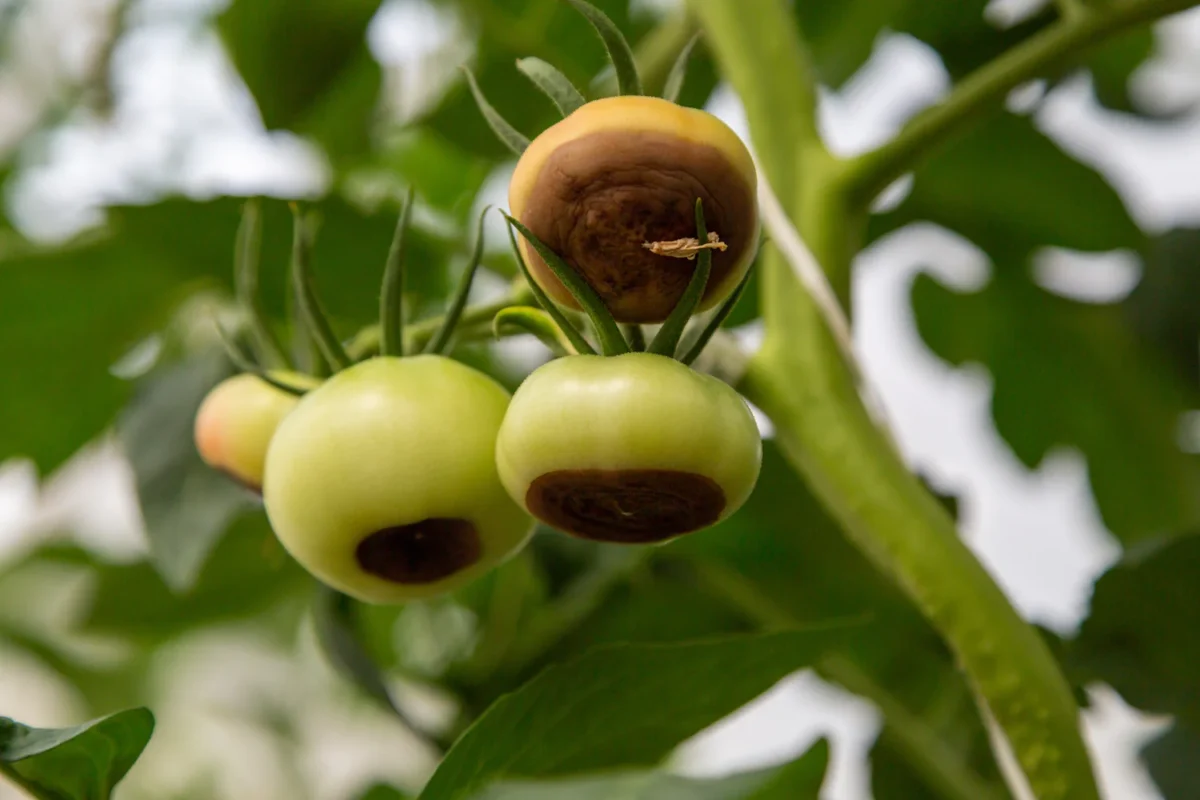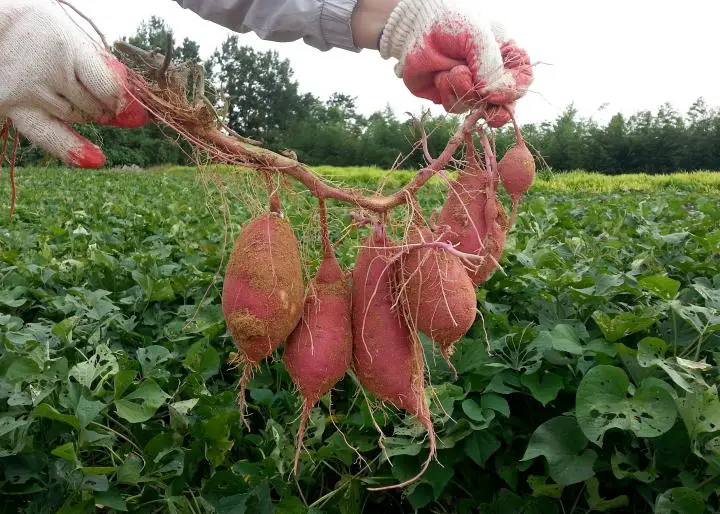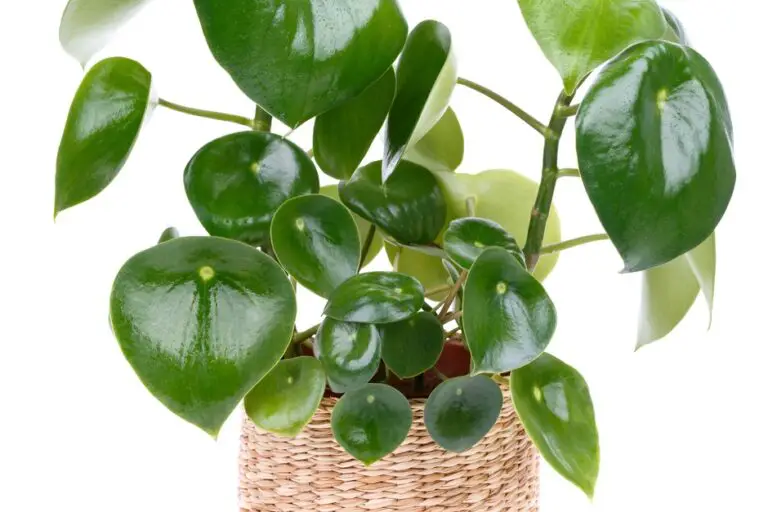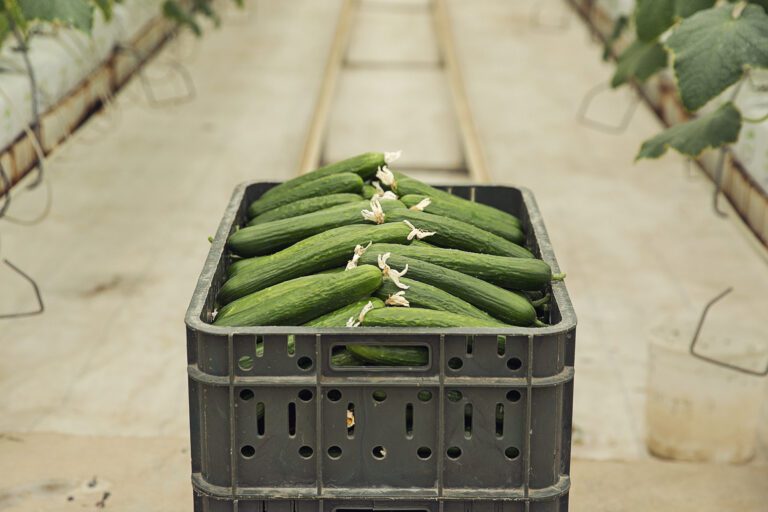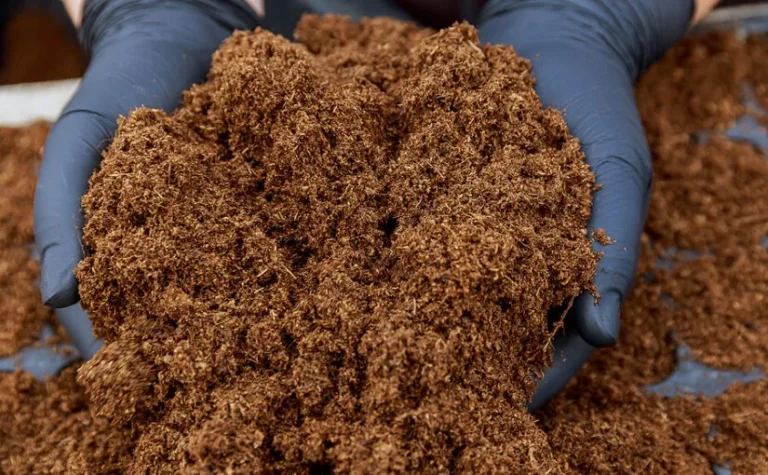Blossom End Rot: Causes and Prevention in Tomatoes
Understanding Blossom End Rot: An Overview of Tomato Plant Disorder
Blossom end rot is a common disorder that affects tomato plants. It is characterized by dark, sunken spots at the bottom of the fruit, which can eventually lead to rotting. This condition can be frustrating for gardeners, as it can result in the loss of a significant portion of the tomato crop.
The development of blossom end rot is often attributed to a lack of calcium in the plant. Calcium plays a crucial role in maintaining the integrity of cell walls, and a deficiency can result in weakened cells that are more prone to damage. However, it is important to note that the issue is not typically due to a lack of calcium in the soil, but rather the plant’s inability to effectively take up and transport calcium to the developing fruit.
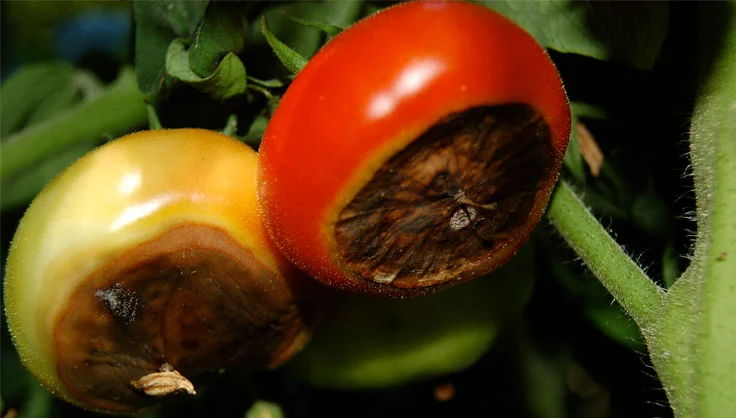
There are several factors that can contribute to blossom end rot in tomatoes. Fluctuations in soil moisture levels, whether it be excessive or inadequate moisture, can disrupt the plant’s ability to absorb calcium. Additionally, imbalances in soil pH can hinder calcium uptake. Soil with a pH below 6.0 or above 7.0 can limit the availability of calcium, increasing the risk of blossom end rot. It is also important to consider temperature fluctuations, as both excessively high and low temperatures can interfere with calcium absorption and transport in the plant. Lastly, certain tomato cultivars may be more susceptible to developing blossom end rot than others.
The Role of Calcium in Tomato Plant Health
Calcium plays a crucial role in the overall health and development of tomato plants. As an essential nutrient, calcium is involved in various physiological processes, including cell wall formation, enzyme activation, and membrane stability. Adequate calcium levels not only ensure strong and sturdy plant structures but also promote proper nutrient uptake and translocation within the plant.
One of the primary functions of calcium in tomato plants is the formation and maintenance of strong cell walls. Calcium acts as a cementing agent, strengthening the cell walls and providing structural support. This is particularly important in fast-growing tissues, such as young leaves and fruits. Insufficient calcium levels can result in weakened cell walls, making tomato plants more susceptible to diseases, pests, and physiological disorders like blossom end rot.
Moreover, calcium is essential for the activation of various enzymes that facilitate biochemical reactions within tomato plants. Enzymes are responsible for numerous metabolic processes, including photosynthesis, respiration, and nutrient metabolism. When calcium is limited, enzyme activity can be hindered, leading to reduced plant growth, poor fruit development, and compromised overall plant health. To ensure adequate calcium levels, it is crucial to provide a balanced nutrient solution or soil fertility program that includes calcium supplements tailored to the specific needs of tomato plants.
Remember, a calcium deficiency can have detrimental effects on tomato plants, affecting their growth, development, and overall health. By understanding the role of calcium and addressing any deficiencies, gardeners can proactively promote the well-being and productivity of their tomato plants.
Factors Contributing to Blossom End Rot in Tomatoes
Blossom end rot is a common disorder that affects tomato plants, causing black or brown sunken spots to form at the blossom end of the fruit. While calcium deficiency is often associated with this condition, there are other factors that contribute to the development of blossom end rot in tomatoes.
One factor is inconsistent or fluctuating soil moisture levels. When the soil becomes too dry, it hinders the plant’s ability to take up calcium, leading to calcium deficiency and subsequent blossom end rot. On the other hand, excessive moisture can also be detrimental, as it can prevent the roots from accessing the calcium in the soil. Maintaining consistent soil moisture is crucial in preventing this disorder.
Another contributing factor is imbalanced soil pH levels. Tomatoes prefer a slightly acidic soil with a pH between 6.0 and 6.8. When the pH is too high or too low, it affects the availability and uptake of nutrients, including calcium. Regular soil testing and adjusting the pH accordingly can help reduce the risk of blossom end rot.
Here is a chart below that shows some of the factors that promotes vlossom end rot in tomatoes:
| Factor | Description |
|---|---|
| Calcium Deficiency | Insufficient calcium uptake by the plant leads to inadequate calcium levels in developing fruits, resulting in blossom end rot. |
| Watering Practices | Inconsistent or inadequate watering can disrupt calcium uptake and distribution within the plant, contributing to blossom end rot. |
| Temperature Fluctuations | Extreme temperatures, either too high or too low, can impair calcium uptake and transport within the plant, increasing the risk of rot. |
| Imbalanced Soil pH | Soil pH levels outside the optimal range (6.0 to 6.5) can affect calcium availability in the soil, leading to blossom end rot in tomatoes. |
| Root Damage | Damage to the plant’s roots from pests, diseases, or environmental factors can hinder water and nutrient uptake, contributing to rot. |
| Fertilization Imbalance | Excessive nitrogen, potassium, or ammonium fertilization can interfere with calcium uptake, exacerbating blossom end rot in tomatoes. |
| Genetic Predisposition | Certain tomato varieties are more susceptible to blossom end rot due to genetic factors such as thinner fruit walls or calcium transport issues. |
| Environmental Stressors | Drought, high humidity, or waterlogged soil can stress plants, disrupting calcium uptake and increasing the likelihood of blossom end rot. |
| Soil Salinity | High levels of salts in the soil can inhibit calcium uptake by the plant, leading to calcium deficiency and blossom end rot in tomatoes. |
Soil pH and Its Impact on Blossom End Rot
Soil pH plays a crucial role in the development of blossom end rot in tomato plants. Blossom end rot is a physiological disorder characterized by the appearance of dark, sunken spots at the blossom end of the fruit. It occurs when the plant is unable to absorb and transport calcium effectively, leading to a deficiency of this essential nutrient in the affected tissues.
The pH level of the soil directly affects the availability and uptake of calcium by the tomato plants. In acidic soils with a pH below 6.0, calcium becomes less soluble and more difficult for the plants to access. As a result, the plants may not receive an adequate supply of calcium, increasing the risk of blossom end rot. On the other hand, excessively alkaline soils with a pH above 7.5 can also impair calcium availability, as it can become bound to other elements in the soil and inaccessible to the plants. Hence, maintaining an optimal soil pH level between 6.0 and 7.0 is essential for preventing blossom end rot and ensuring healthy tomato plants.
Managing Soil Moisture to Prevent Blossom End Rot
Managing soil moisture is crucial for preventing blossom end rot in tomato plants. This disorder occurs when there is a calcium deficiency in the developing fruit, leading to a brown, sunken lesion on the blossom end. One of the key factors contributing to blossom end rot is inconsistent soil moisture levels.
To effectively manage soil moisture, it is essential to provide a consistent water supply to the tomato plants. Irrigation should be done deeply and regularly, ensuring that the soil is evenly moist but not saturated. Overwatering can lead to poor nutrient uptake and may exacerbate the calcium deficiency issue. On the other hand, underwatering can cause the plants to become stressed, making them more susceptible to blossom end rot.
To determine the optimal watering schedule for your tomato plants, it is important to monitor the moisture content of the soil. You can use a moisture meter or simply feel the soil with your fingers to gauge whether it is too dry or too wet. It is recommended to water the plants when the top inch of soil feels slightly dry. By maintaining a consistent moisture level in the soil, you can help prevent blossom end rot and promote healthy tomato plant growth.
In addition to regular irrigation, mulching can also play a role in managing soil moisture. Applying a layer of organic mulch around the base of the plants helps to retain moisture, reduce evaporation, and regulate soil temperature. This can create a more stable environment for the tomato plants, minimizing the risk of blossom end rot.
Overall, managing soil moisture is a crucial aspect of preventing blossom end rot in tomato plants. By providing consistent watering and incorporating mulching techniques, you can create an optimal growing environment that promotes healthy fruit development. Remember to monitor the soil moisture levels regularly and adjust your watering practices accordingly to ensure the best possible outcomes for your tomato plants.
The Importance of Proper Fertilization for Tomato Plants
Proper fertilization is of utmost importance when it comes to ensuring the health and productivity of tomato plants. Tomatoes have specific nutrient requirements, and providing them with the right balance of fertilizers can significantly impact their growth and fruit development.
One crucial element that tomato plants require is nitrogen (N), which plays a vital role in promoting leaf and stem growth. A deficiency in nitrogen can lead to stunted plants with pale, yellowing leaves. On the other hand, excessive nitrogen can result in vigorous vegetative growth at the expense of fruit production. Striking the right balance is essential to ensure a healthy and productive tomato plant.
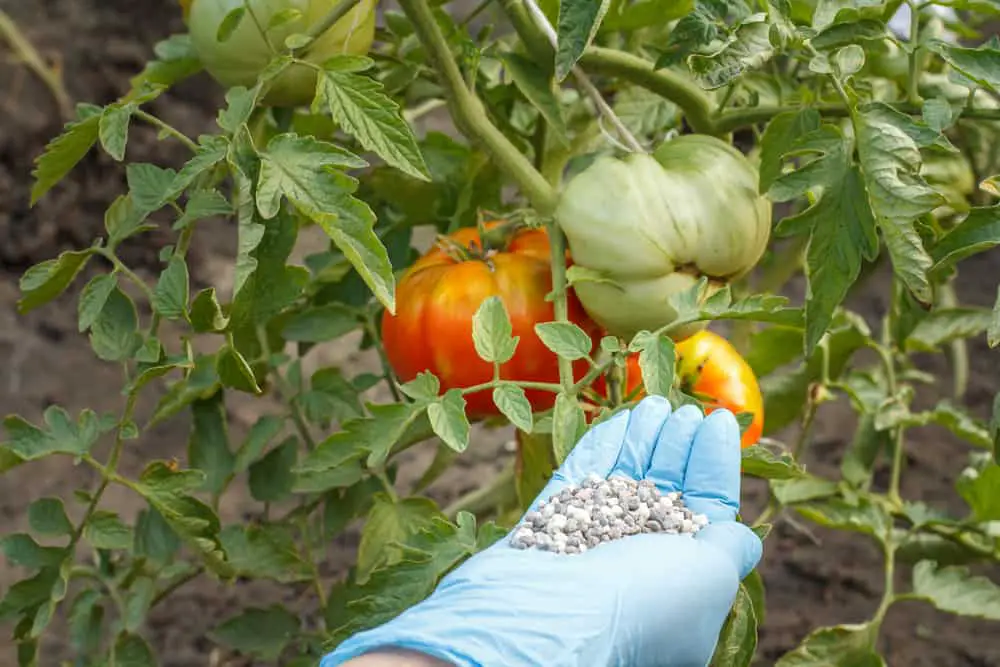
Apart from nitrogen, tomatoes also require phosphorus (P) and potassium (K) for overall plant health and fruit development. Phosphorus aids in root development and hastens fruit ripening, while potassium contributes to disease resistance and enhances fruit quality. Along with these primary macronutrients, secondary nutrients such as calcium, magnesium, and sulfur, as well as trace elements like iron, manganese, zinc, and boron, are all essential for the proper functioning of tomato plants.
To determine the appropriate fertilizer formulation for your tomatoes, it is recommended to conduct a soil test. This will provide valuable insights into the nutrient composition of your soil and guide you in making informed decisions regarding fertilizer selection and application rates. Incorporating organic matter, such as compost or well-rotted manure, into the soil can also improve its nutrient content and promote long-term soil fertility. Remember, providing proper fertilization is a crucial step towards achieving healthy, vibrant tomato plants and bountiful harvests.
Controlling Insect Pests and Diseases to Prevent Blossom End Rot
Controlling insect pests and diseases is essential in preventing blossom end rot in tomatoes. Pests such as aphids, whiteflies, and beetles can transmit diseases to the plants, while diseases like bacterial canker and fusarium wilt can directly damage the fruit, making them more susceptible to blossom end rot. To combat these threats, it is crucial to implement proactive pest management strategies.
One effective approach is the use of integrated pest management (IPM) techniques. By utilizing a combination of cultural, biological, and chemical controls, gardeners can effectively suppress pests and reduce the risk of diseases. For instance, introducing beneficial insects like ladybugs and parasitic wasps can help control aphids and whiteflies naturally. Additionally, practicing good sanitation, such as removing and destroying infected plant material, can prevent the spread of diseases. Regular scouting and monitoring for signs of pests and diseases are also key, as early detection allows for timely intervention, minimizing the potential for blossom end rot.
The Influence of Temperature on Blossom End Rot Development
Temperature plays a crucial role in the development of blossom end rot in tomato plants. The occurrence and severity of this disorder are directly influenced by the surrounding temperature conditions. High temperatures, particularly during the fruit ripening stage, can exacerbate the problem, leading to an increased risk of blossom end rot.
When temperatures soar above 85°F (29°C), tomato plants experience stress as a result of water loss through transpiration. This stress hampers the movement of calcium, an essential nutrient for overall plant health and the prevention of blossom end rot, to the developing fruits. As a consequence, the cells at the blossom end of the tomato become deprived of calcium, leading to the characteristic necrotic patches that signify blossom end rot. Additionally, high temperatures can accelerate fruit maturation, further placing stress on the plant’s ability to deliver calcium to the growing fruits.
On the other hand, excessively low temperatures can also contribute to blossom end rot development. Cold temperatures hinder the process of calcium uptake by the plants, resulting in insufficient calcium availability for the developing fruits. This deficiency leaves the tomato susceptible to blossom end rot, even if calcium levels in the soil are adequate. It is worth noting that nighttime temperatures below 55°F (13°C) can be detrimental to calcium absorption, as the cooler conditions impede the plant’s ability to transport the nutrient effectively.
Understanding the influence of temperature on blossom end rot is vital for gardeners hoping to mitigate the risk of this disorder. By carefully monitoring and managing temperature fluctuations in their tomato growing environment, growers can create optimal conditions for calcium uptake, thereby reducing the likelihood of blossom end rot occurrence.
Cultivar Selection: Choosing Resistant Tomato Varieties
Choosing the right tomato varieties is crucial for preventing blossom end rot. Certain cultivars are more resistant to this disorder than others, making them a wise choice for gardeners hoping to avoid the frustration of damaged fruits. When selecting resistant tomato varieties, it is important to consider a few key factors. First, look for cultivars that have been specifically bred or selected for resistance to blossom end rot. These varieties have been developed to naturally possess the genetic traits needed to withstand the disorder. Secondly, consider the climate and growing conditions in your area. Some resistant varieties perform better in specific regions, so it is wise to choose cultivars that are well-suited to your local climate.
In addition to resistance, it is important to select tomato varieties that meet your personal preferences and gardening goals. Consider factors like flavor, size, and growth habit. With a wide range of resistant cultivars available, you can find options that suit your taste preferences and preferred cultivation methods. Whether you prefer large beefsteak tomatoes, cherry tomatoes, or something in between, there are varieties with resistance to blossom end rot available in each category. By carefully selecting resistant tomato varieties that align with your needs and preferences, you can enjoy a bountiful harvest while minimizing the risk of blossom end rot.
Pruning Techniques for Reducing Blossom End Rot Risk
Pruning is an important technique to reduce the risk of blossom end rot in tomato plants. By carefully removing excessive foliage, you can improve air circulation and increase sunlight penetration, which are crucial for preventing this disorder. When pruning, it is essential to focus on removing the lower leaves and suckers, as they tend to receive less sunlight and can become overcrowded. By doing so, you allow more light to reach the fruit, promoting better fruit development and minimizing the chances of blossom end rot occurrence.
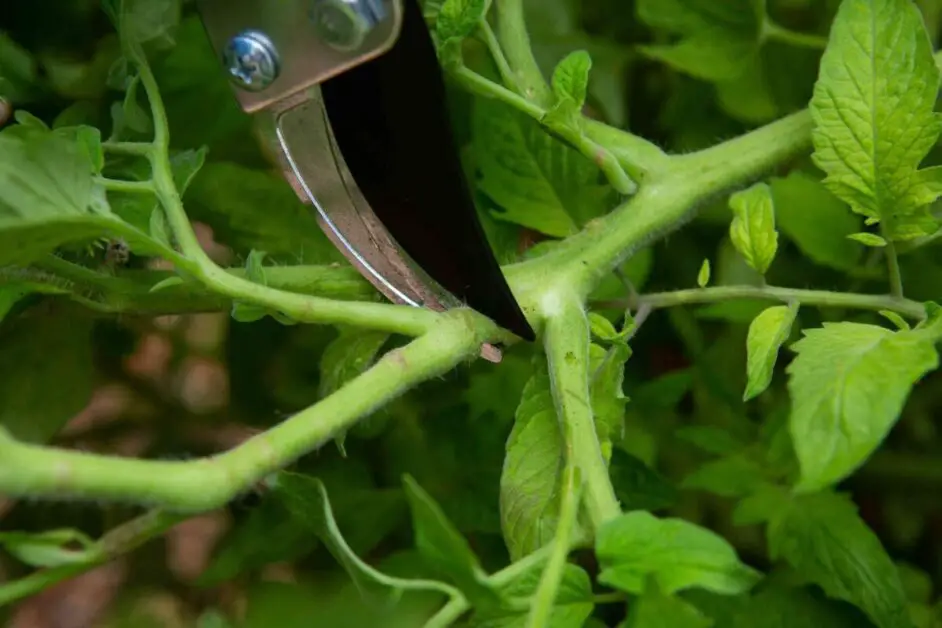
It is advisable to prune tomato plants regularly throughout the growing season. A good approach is to remove the suckers, which are the small shoots that develop in the leaf axils. By removing these, you direct the plant’s energy towards fruit production and limit the potential for nutrient and moisture imbalances that can contribute to blossom end rot. Additionally, ensure that you use clean and sharp pruning tools to avoid any unnecessary damage to the plant. Remember, pruning is all about striking the right balance, so be cautious not to prune excessively, as it may stress the plant and reduce its overall productivity.
The Significance of Proper Tomato Plant Spacing
Proper tomato plant spacing is a critical consideration for any gardener or farmer looking to maximize the health and productivity of their tomato plants. Adequate spacing between tomato plants allows for increased air circulation, sunlight penetration, and nutrient absorption, all of which are essential for optimum growth. When tomato plants are overcrowded, they become more susceptible to diseases, pests, and nutrient deficiencies.
In addition to the direct impacts on plant health, proper spacing also ensures that each tomato plant has enough room to develop a strong root system. With ample space, tomato roots can spread out and access the necessary moisture and nutrients in the soil. This promotes better water and nutrient uptake, ultimately leading to stronger plants and higher yields.
It is important to note that the ideal spacing between tomato plants varies depending on the specific variety and growing conditions. However, a general guideline is to leave approximately 2 to 3 feet of space between each plant. This distance allows ample room for the plants to grow without competing for resources. By adhering to proper tomato plant spacing, gardeners and farmers can create a favorable environment for their tomato plants, leading to healthier plants and bountiful harvests.
Mulching as a Preventive Measure against Blossom End Rot
Mulching is an effective preventive measure against blossom end rot in tomato plants. By applying a layer of organic mulch around the base of the plants, gardeners can help regulate soil moisture levels and prevent extreme fluctuations that often contribute to the development of this disorder. Mulch acts as a protective barrier, reducing evaporation and keeping the soil consistently moist, especially during hot and dry periods.
Furthermore, mulch helps to regulate soil temperature, preventing excessive heat that can stress plants and lead to blossom end rot. The insulation provided by the mulch layer helps maintain a more stable and optimal root environment, ensuring the plants can efficiently uptake water and nutrients. With proper moisture and nutrient availability, the risk of blossom end rot is significantly reduced.
Several options are available when it comes to selecting the right mulch for tomato plants. Organic materials such as straw, grass clippings, or wood chips are commonly used as they break down over time, enriching the soil with nutrients. However, it is important to avoid using fresh manure as mulch, as it can potentially introduce harmful bacteria and pathogens. Additionally, mulch should be applied in a thin layer, approximately two to three inches thick, around the base of the plants, while leaving a small space around the stem to prevent rot or disease.
Watering Techniques to Minimize Blossom End Rot Risk
Watering techniques play a crucial role in minimizing the risk of blossom end rot in tomato plants. One key principle to remember is to maintain consistent and even soil moisture levels. Irregular watering practices, such as allowing the soil to dry out followed by heavy watering, can disrupt calcium uptake by the plant and increase the likelihood of blossom end rot. Instead, it is recommended to water tomato plants deeply and evenly to ensure the roots receive an adequate supply of water.
Another important aspect is to avoid excessive watering, as overly saturated soil can lead to oxygen deprivation in the root zone. When roots do not receive enough oxygen, it can hinder calcium uptake and exacerbate blossom end rot. To prevent this, it is advisable to water tomato plants when the top 1 to 2 inches of soil feels dry to the touch. By allowing the soil to partially dry between watering, you can ensure a healthy balance of moisture and oxygen in the root zone, reducing the risk of blossom end rot.
Common Mistakes that Contribute to Blossom End Rot
One of the common mistakes that gardeners make that contributes to blossom end rot in tomatoes is over-fertilization. While it may seem intuitive to provide plenty of nutrients for healthy plant growth, excessive fertilization can actually disrupt the balance of nutrients in the soil, leading to blossom end rot. Too much nitrogen, for example, can inhibit calcium uptake in the plant, which is crucial for preventing this disorder.
Another mistake to avoid is irregular watering practices. Inconsistent moisture levels in the soil can make it difficult for tomato plants to absorb calcium effectively, resulting in blossom end rot. Overwatering can also cause the roots to become waterlogged, making it harder for the plant to take up nutrients. On the other hand, underwatering can lead to stress and reduced nutrient absorption. Maintaining consistent and adequate soil moisture is key to preventing this frustrating disorder.
Here is a chart that shows some of the common mistakes that are responsible for blossom end rot:
| Mistake | Description |
|---|---|
| Inconsistent Watering | Irregular watering disrupts calcium uptake. |
| Overfertilization | Excessive nitrogen affects calcium absorption. |
| Poor Soil Drainage | Waterlogging impedes root function and calcium uptake. |
| Planting Too Early | Cold soil delays root development, increasing susceptibility. |
| Compact Plant Spacing | Crowding restricts root spread and nutrient access. |
| Ignoring Soil pH Levels | Unchecked pH affects calcium availability. |
| Lack of Mulching | Absence of mulch leads to soil moisture fluctuations. |
| Inadequate Pruning | Excess foliage traps humidity, fostering rot. |
| Ignoring Environmental Stressors | Extreme conditions disrupt calcium uptake. |
| Late Harvesting | Overripe fruit loses calcium, promoting rot. |
Early Detection and Treatment of Blossom End Rot Symptoms
Early detection and treatment of blossom end rot symptoms is crucial in preventing further damage to tomato plants. This disorder, characterized by dark, sunken lesions at the blossom end of the fruit, is often caused by a calcium deficiency in the developing fruits. Once symptoms appear, it is important to act swiftly to minimize the impact on the overall plant health.
One of the first signs of blossom end rot is the appearance of small, water-soaked spots on the bottom of the tomato fruit. These spots gradually enlarge and turn black or brown, giving the affected area a leathery texture. As the condition progresses, the affected fruits may become distorted and eventually rot. Regular monitoring of the developing fruits is essential to catch and address potential symptoms early.
Best Practices for Preventing Blossom End Rot in Tomatoes
To prevent blossom end rot in tomatoes, it is crucial to follow best practices that promote healthy plant growth and minimize the risk of this disorder. One of the most important steps is to ensure a proper balance of nutrients, especially calcium, in the soil. Calcium deficiency is a common cause of blossom end rot, as it affects the development and strength of cell walls in the fruit. Conducting a soil test before planting can help determine if additional calcium is needed and enable the use of appropriate fertilizers or soil amendments.
Maintaining soil moisture levels is another key aspect of preventing blossom end rot. Uneven watering, whether it’s excessive or insufficient, can disrupt the movement of calcium through the plant, leading to calcium deficiency and subsequent rotting of the fruit. It is recommended to provide consistent moisture to the plants by using techniques like drip irrigation or soaker hoses. Additionally, applying organic mulch around the plants helps retain moisture, moderates soil temperature, and reduces evaporation, thus creating a favorable environment for the tomato plants to grow and develop without succumbing to blossom end rot.
To prevent blossom end rot in tomatoes watch the full video.
What is blossom end rot?
Blossom end rot is a disorder that affects tomato plants, causing the bottom end of the fruit to develop a dark, sunken lesion.
How does calcium affect tomato plant health?
Calcium plays a vital role in tomato plant health as it helps in the development and structure of cell walls. Adequate calcium levels can help prevent blossom end rot.
How does soil pH impact blossom end rot?
Soil pH can affect a plant’s ability to absorb calcium. Imbalanced pH levels can hinder calcium uptake, increasing the risk of blossom end rot.
What is the importance of proper fertilization for tomato plants?
Proper fertilization provides essential nutrients, including calcium, to tomato plants. This can help prevent blossom end rot and ensure healthy plant growth.
How can insect pests and diseases contribute to blossom end rot?
Insect pests and diseases can damage the plant’s root system, reducing its ability to absorb calcium. This can increase the likelihood of blossom end rot.
Does temperature have an influence on blossom end rot development?
Yes, temperature can impact blossom end rot development. High temperatures can accelerate water loss from the plant, leading to calcium deficiency and increased risk of blossom end rot.
Are certain tomato varieties more resistant to blossom end rot?
Yes, some tomato cultivars have been bred to be more resistant to blossom end rot. Choosing resistant varieties can help mitigate the risk of this disorder.
How can pruning techniques reduce the risk of blossom end rot?
Pruning techniques, such as removing excessive foliage, can improve air circulation around the plant, reducing humidity levels and minimizing the risk of blossom end rot.
What is the significance of proper tomato plant spacing?
Proper spacing between tomato plants allows for better air circulation, reducing humidity levels and preventing the spread of fungal diseases, including blossom end rot.
How does mulching help prevent blossom end rot?
Mulching helps regulate soil moisture levels, preventing extreme fluctuations that can lead to calcium uptake issues and blossom end rot.
What are some watering techniques to minimize the risk of blossom end rot?
Watering deeply and infrequently, rather than frequent shallow watering, can encourage deeper root growth and help prevent blossom end rot.
What are some common mistakes that contribute to blossom end rot?
Over-fertilizing with nitrogen, irregular watering, and improper pH levels are common mistakes that can contribute to the development of blossom end rot.
How can blossom end rot symptoms be detected early?
Blossom end rot symptoms, such as dark, sunken lesions on the fruit, can be detected early by regularly inspecting tomato plants during their growth stages.
What are the best practices for preventing blossom end rot in tomatoes?
Best practices for preventing blossom end rot include maintaining proper soil moisture, ensuring adequate calcium levels, controlling pests and diseases, selecting resistant varieties, and implementing proper pruning, spacing, mulching, and watering techniques.

